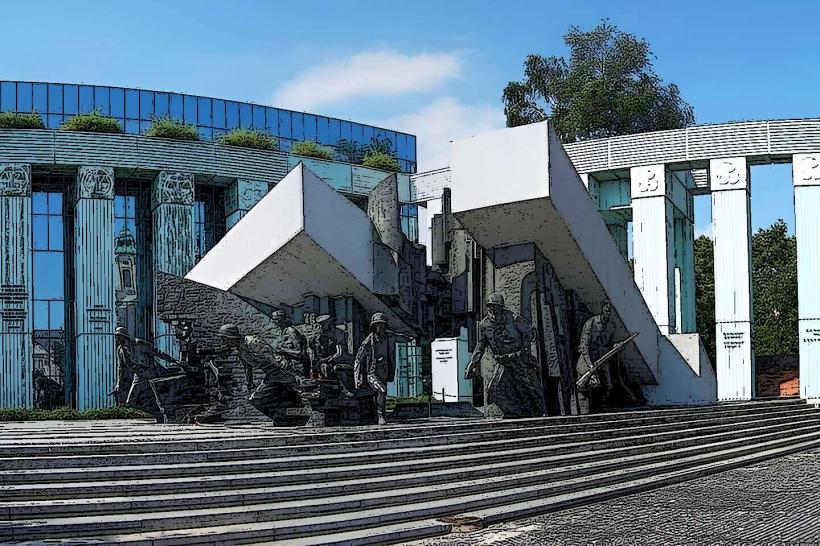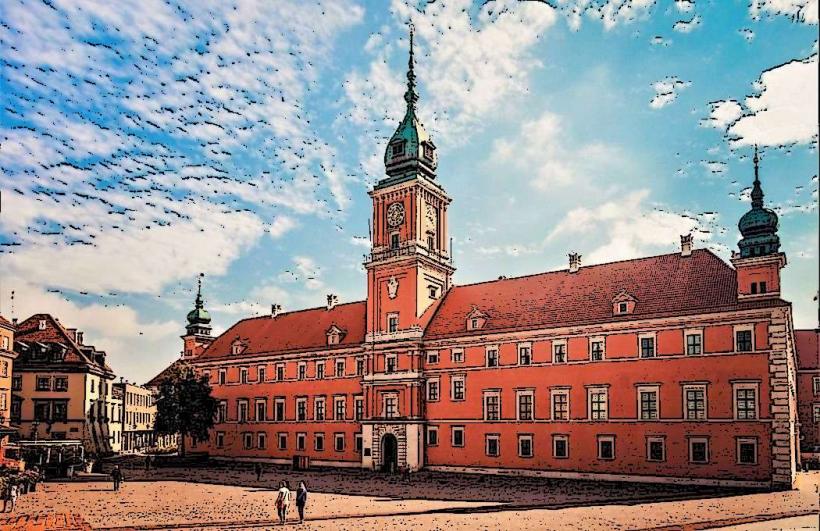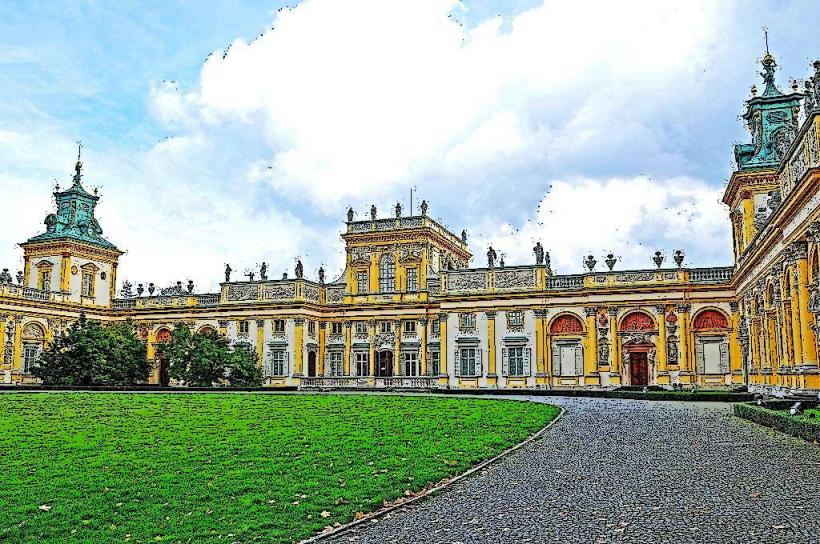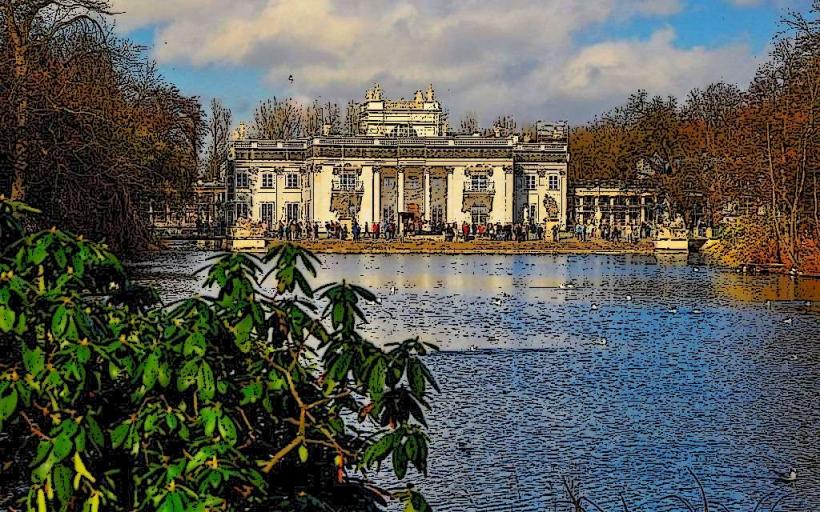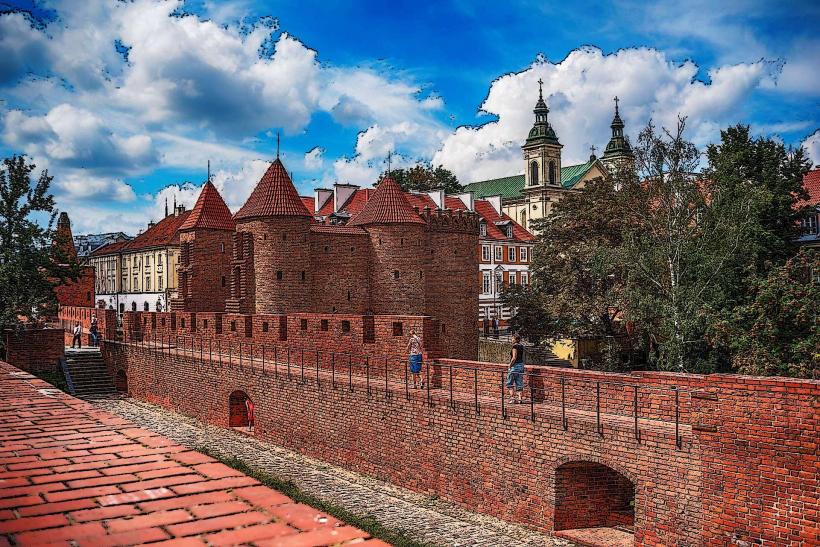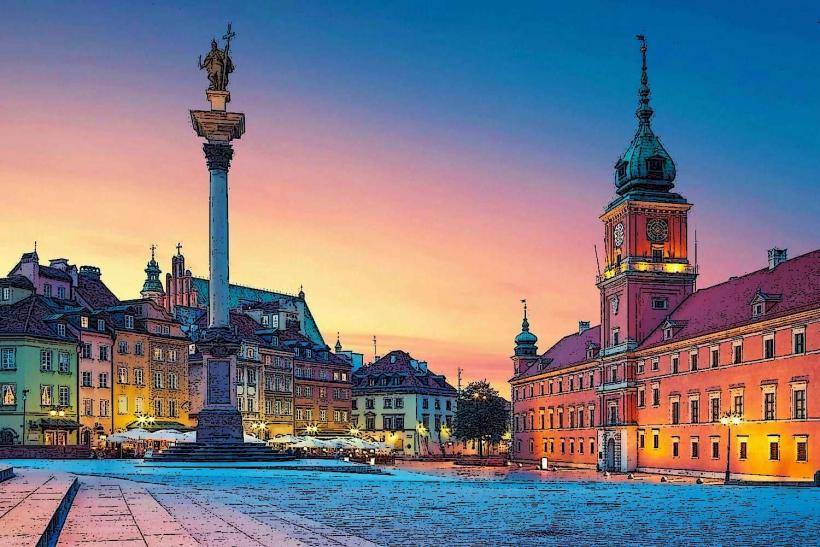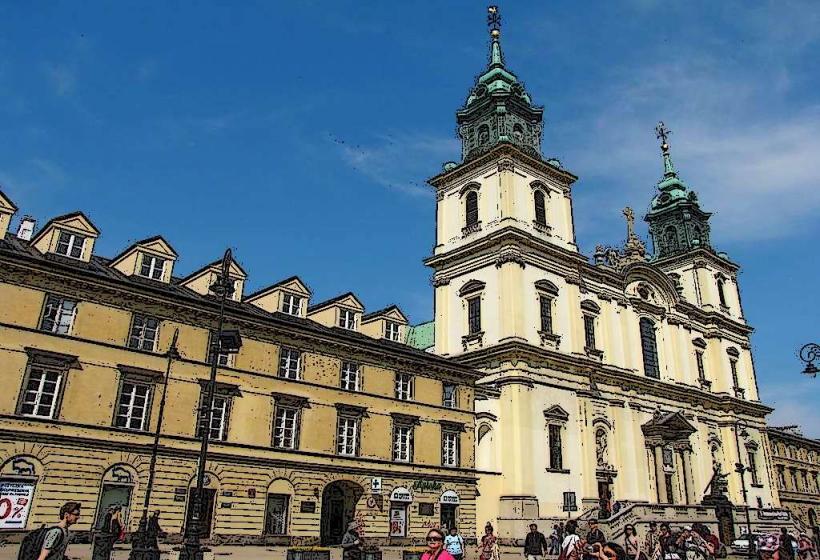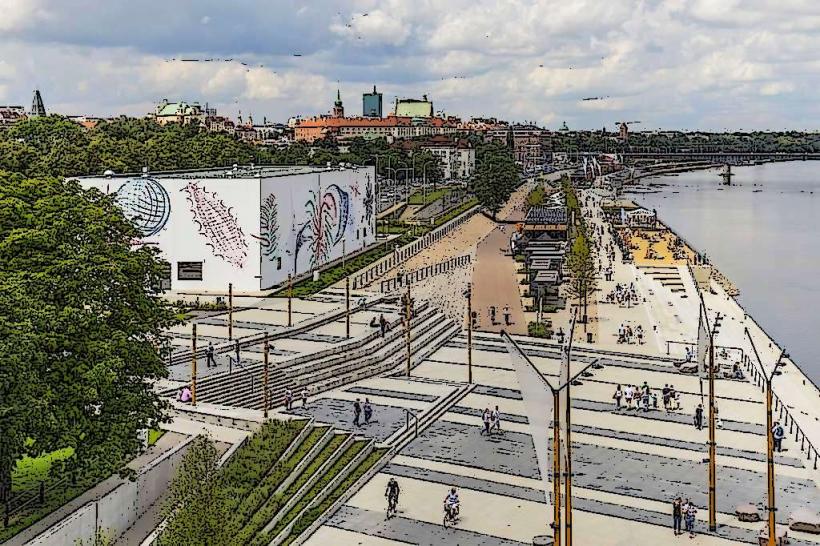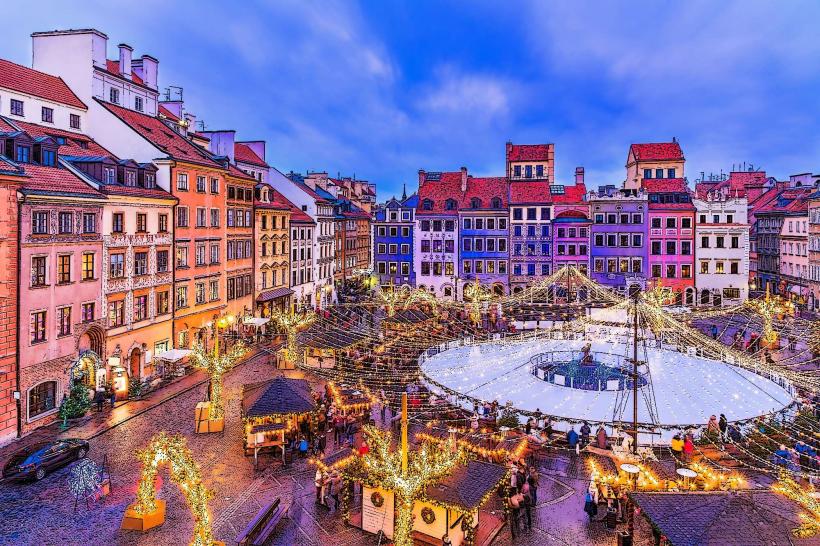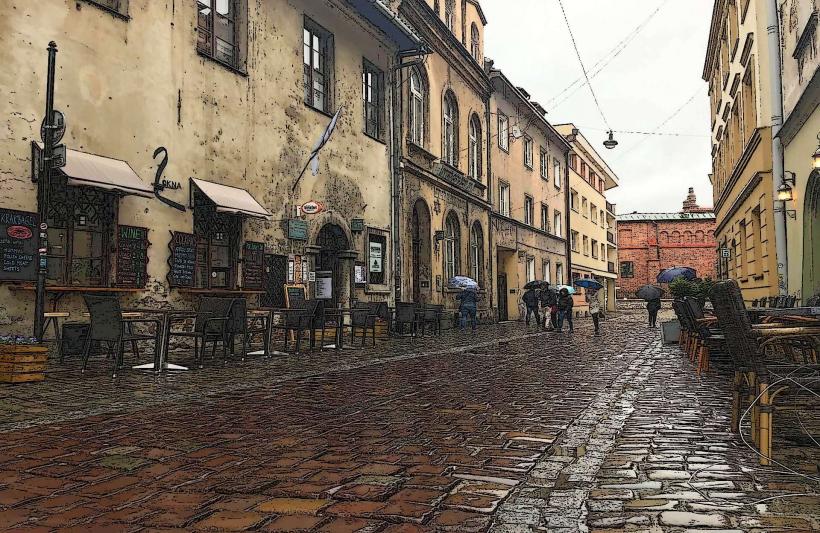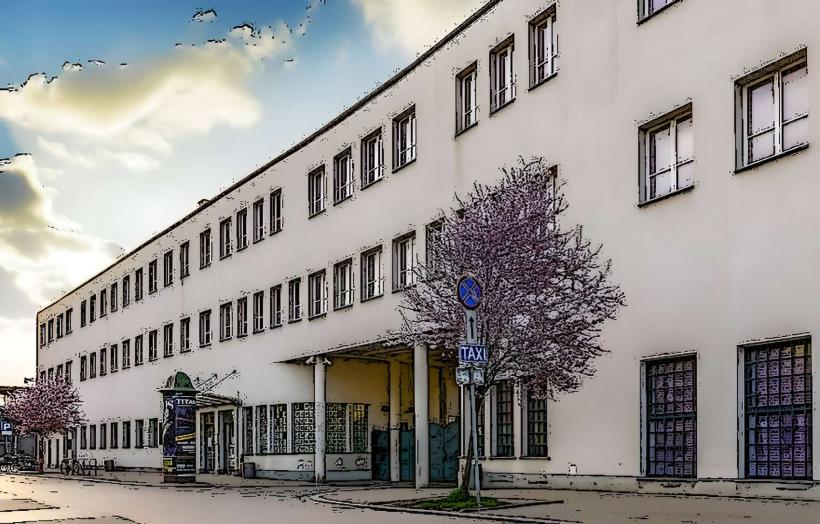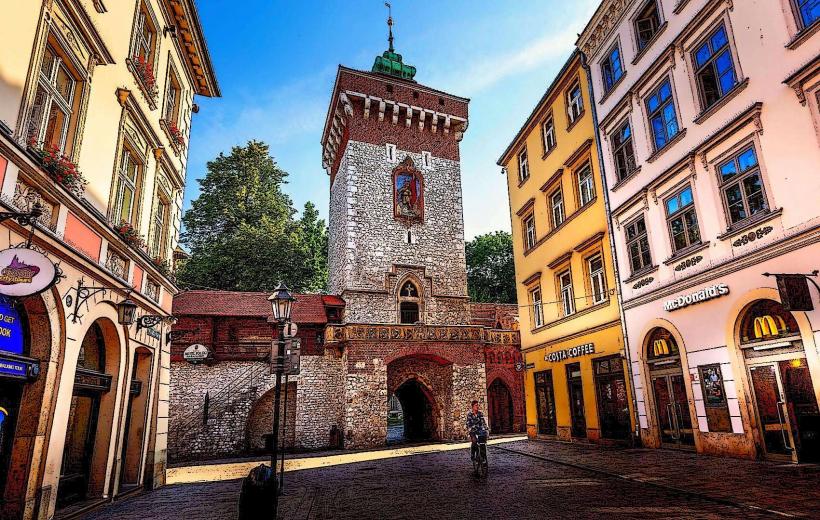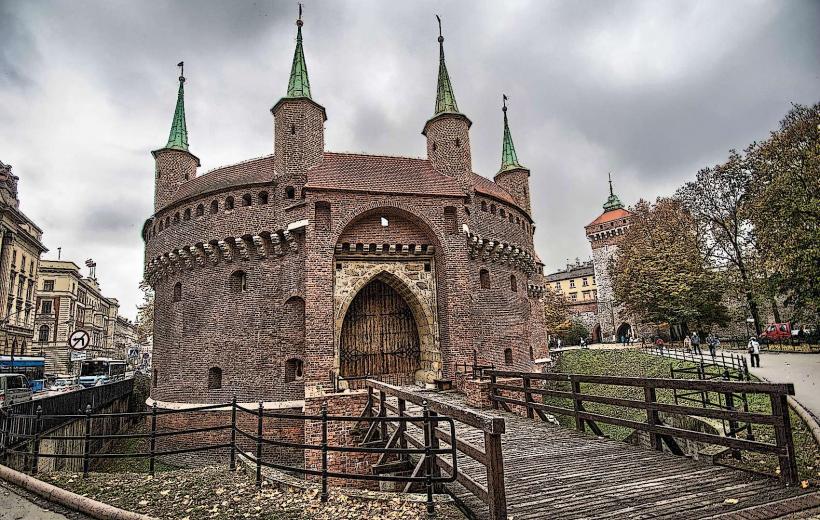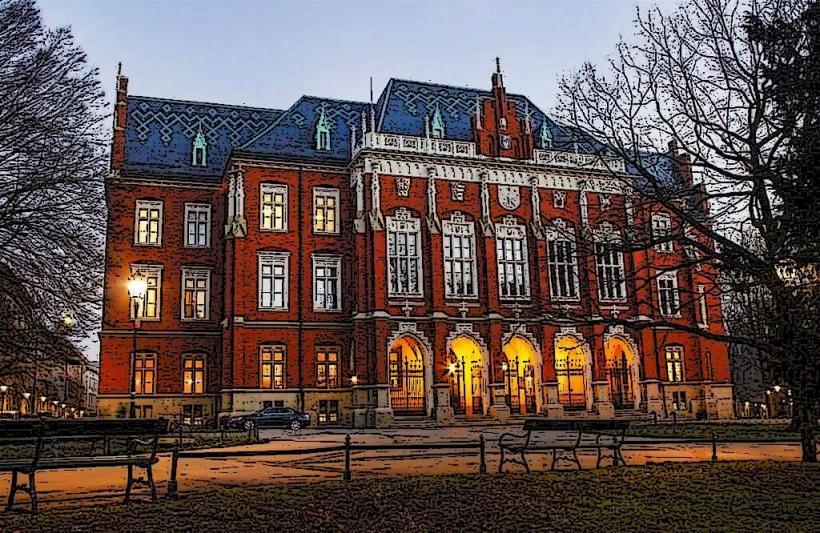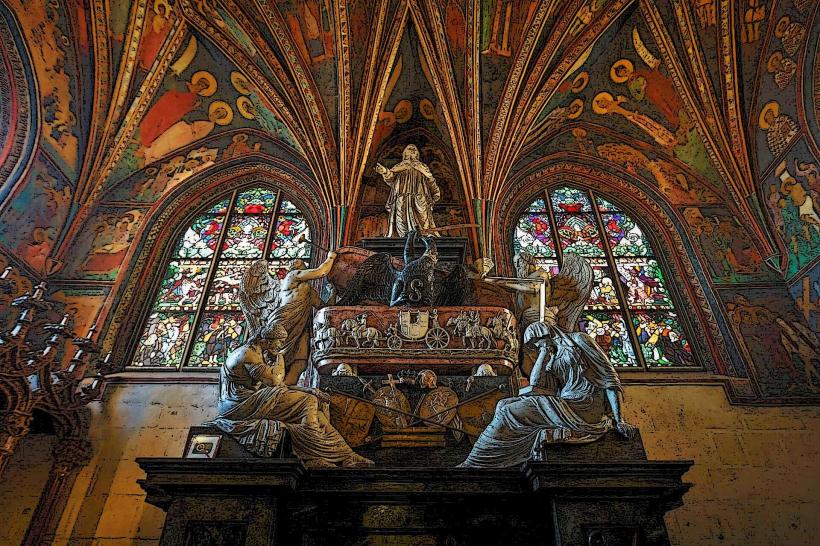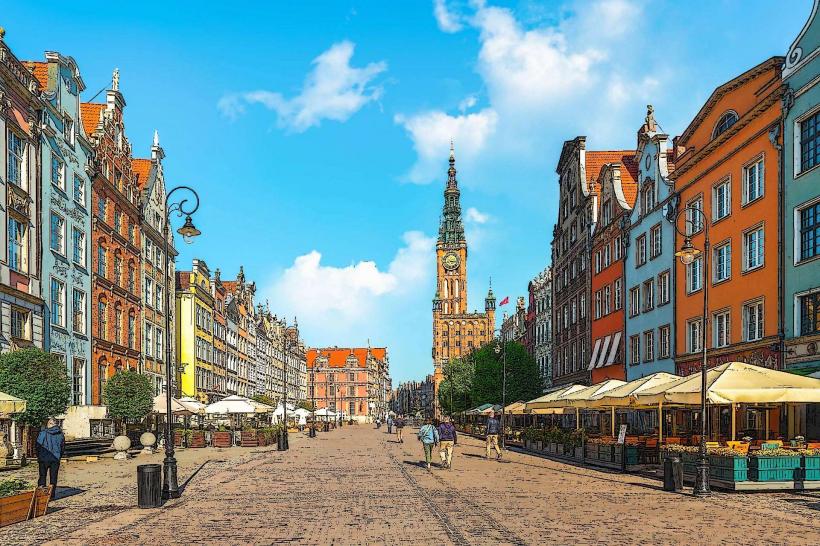Information
Landmark: Palace of Culture and ScienceCity: Warsaw
Country: Poland
Continent: Europe
The Palace of Culture and Science (Polish: Pałac Kultury i Nauki, or PKiN) is one of the most iconic and controversial landmarks in Warsaw, Poland. It stands as a symbol of both Poland's communist past and its post-communist transformation. This monumental skyscraper, designed in the Soviet style, has been the subject of debate over its architectural and historical significance but remains an essential part of the city's skyline and cultural landscape.
History and Background
The Palace of Culture and Science was built as a gift from the Soviet Union to the Polish people, reflecting the political and cultural ties between Poland and the Soviet bloc after World War II.
Construction: The palace was commissioned by Joseph Stalin in 1952, following the Yalta Conference and the end of World War II. The construction project, officially named the Stalin’s Palace of Culture and Science, began in 1952 and was completed in 1955. It was designed by the Soviet architect Lev Rudnev and was part of a larger project of imposing Stalinist architecture throughout Eastern Europe. The building was constructed by Polish workers under the supervision of Soviet engineers.
Soviet Symbolism: The Palace was conceived as a symbol of Soviet power and influence over the People’s Republic of Poland. It was meant to showcase Soviet grandeur and was intended to overshadow the earlier architectural traditions of Warsaw. It was designed in the Stalinist style, characterized by grandiosity, monumental proportions, and the use of neoclassical and baroque elements, with a distinct Soviet flavor.
Name and Controversy: The Palace was initially named after Stalin, but after his death in 1953, the name was officially changed to the Palace of Culture and Science. Despite this change, the building remained a symbol of Soviet domination, a legacy that still causes mixed reactions in Poland. While some view it as a reminder of the country’s difficult history under communist rule, others see it as an important part of Warsaw’s architectural landscape.
Architecture and Design
The Palace of Culture and Science is a striking example of Stalinist Empire style. It stands 237 meters (778 feet) tall, making it the tallest building in Poland until it was surpassed by newer skyscrapers in the 21st century. It also remains one of the tallest buildings in Poland today.
Size and Structure: The building has 42 floors, and its height is topped by a massive spire. The spire alone reaches 43 meters, and the building itself contains over 3,000 rooms. The building’s design incorporates a fusion of neoclassical, baroque, and art-deco elements, along with monumental proportions that reflect Soviet ambition.
Facade: The exterior of the Palace is clad in sandstone and limestone, with a grand entrance leading to the building’s main lobby. The structure is highly decorated with symbolic Soviet motifs such as columns, arches, domes, and gilded details. The monumental steps and the wide colonnades further emphasize its grandeur.
Interior Design: Inside, the Palace features expansive halls, a grand staircase, and numerous decorative elements that reflect the Soviet influence of the time. The interiors feature detailed plasterwork, chandeliers, and intricate wood paneling.
Observation Deck: The Palace’s observation deck, located on the 30th floor, offers one of the best panoramic views of Warsaw. It is a popular tourist attraction and provides a stunning view of the Vistula River, the Old Town, and the surrounding cityscape. On clear days, visitors can see far beyond the city limits.
Functions and Usage
Today, the Palace of Culture and Science serves as a multifunctional complex. It houses several theaters, cinemas, museums, scientific institutions, educational centers, and offices. It plays a central role in the cultural life of Warsaw and Poland as a whole.
Cultural Institutions:
- The Palace is home to numerous cultural organizations, including the Warsaw Philharmonic and the Polish Soviet Friendship Society, and hosts regular performances, concerts, and exhibitions.
- It also houses the Adam Mickiewicz Institute, which is dedicated to Polish culture and literary heritage.
Museums:
- The Museum of Technology is located inside the Palace and showcases exhibitions related to scientific and technological advancements, especially those relevant to Poland's history and industrial development.
- The Museum of the History of Polish Jews is also housed in the building, focusing on the rich and diverse history of the Jewish community in Poland.
Business and Offices: The Palace houses offices for various businesses, government agencies, and private institutions. It also has conference and exhibition spaces used for corporate events and international conferences.
Cultural Events and Exhibitions: The building regularly hosts art exhibitions, conferences, theater performances, and film screenings. It is also a site for important public events such as New Year's Eve celebrations, festivals, and various cultural gatherings.
The Congress Hall: One of the most famous parts of the Palace is the Congress Hall (Sala Kongresowa), which has hosted numerous important events, including international conferences, concerts, and meetings of political and cultural significance. It is known for its excellent acoustics and has hosted performances by world-renowned musicians and bands.
Symbolism and Controversy
The Palace of Culture and Science remains a controversial symbol in Poland. For many, the building is a reminder of Soviet influence and the political and cultural subjugation of Poland during the communist era. However, others see it as a vital part of the city’s architectural identity and an integral part of Warsaw's modern skyline.
A Soviet Legacy: For those who lived through the communist era, the building evokes memories of the Stalinist period and the political repression that accompanied it. The fact that it was built as a gift from Stalin’s government adds to the resentment it sometimes evokes among older generations.
Symbol of Resilience: On the other hand, some people view the Palace as a symbol of resilience. It stands as a reminder of Poland's endurance during times of political oppression, and for many younger Poles, it is just part of the city's landscape, with little connection to the country’s Soviet past.
Architectural Debate: The building's grandiose design, with its massive size and Soviet-inspired architecture, is often seen as out of place among Warsaw’s other historical buildings. Its imposing stature and the style of its architecture can be polarizing, with some seeing it as a beautiful and striking landmark and others considering it a symbol of Poland’s complicated history.
Conclusion
The Palace of Culture and Science is a building that evokes strong reactions in Poland and beyond. Its massive scale and distinctive architecture make it a notable part of Warsaw’s skyline. It serves as a reminder of Poland’s Soviet past, but also as a living and functioning cultural and scientific center. Whether viewed as a historical relic or a symbol of resilience, the Palace continues to be one of the most iconic buildings in Warsaw and a testament to the complex legacy of the 20th century.

